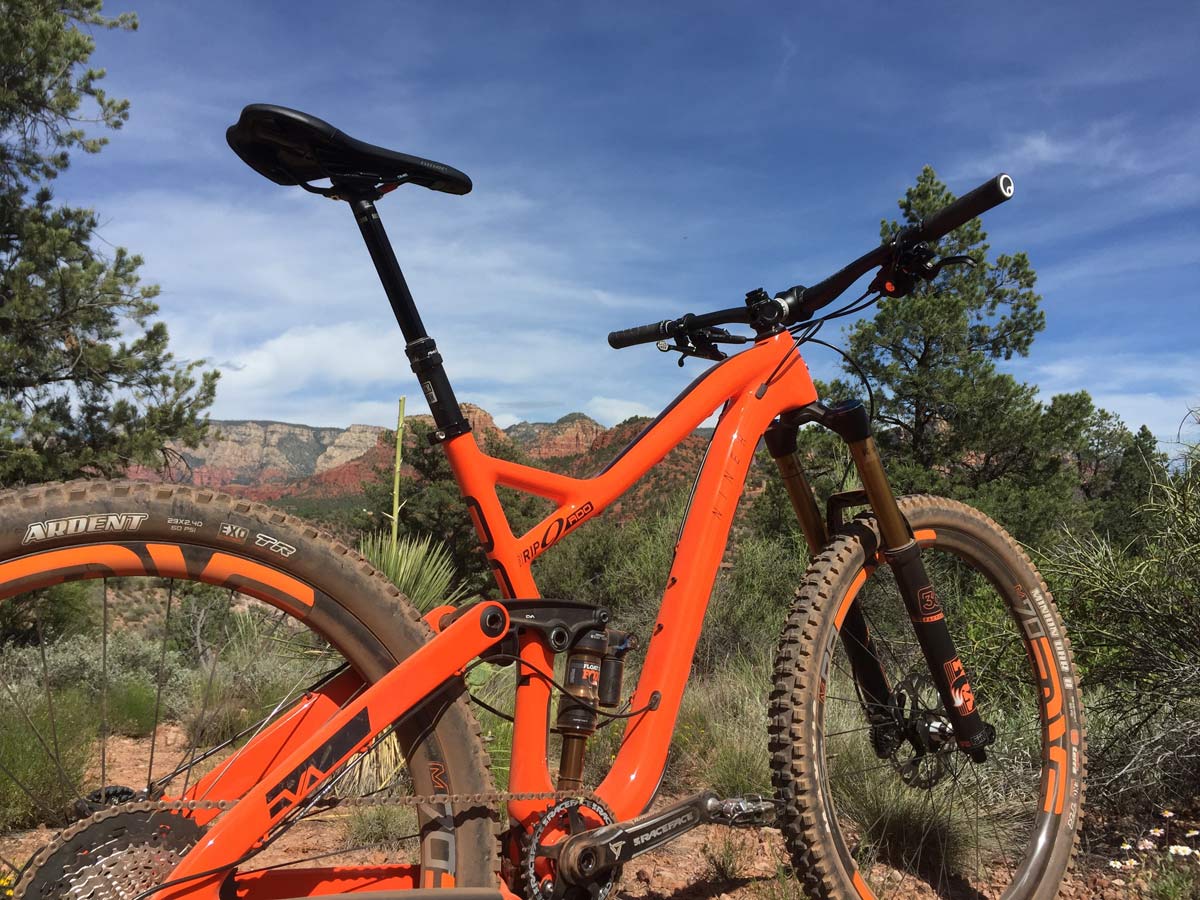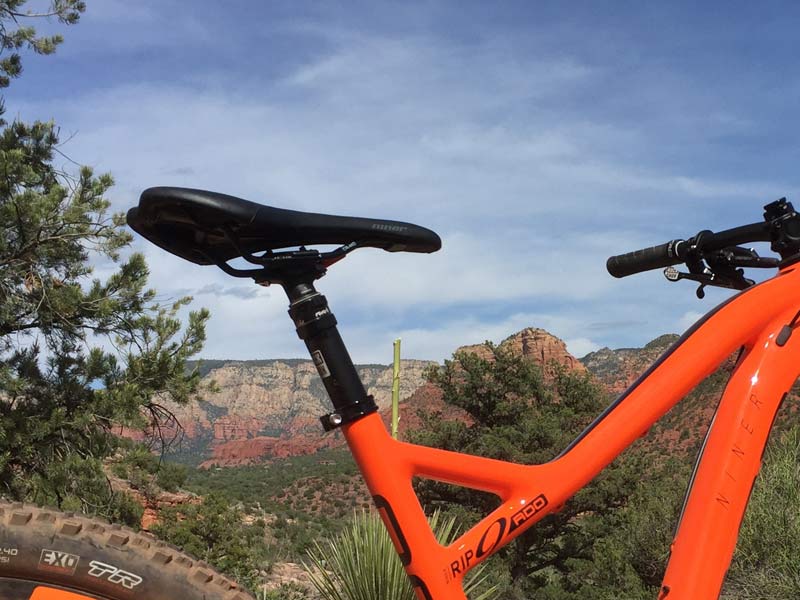Ever get that not-so-smooth, sticky feeling from your dropper seatpost? Where it doesn’t drop easily or won’t return to full extension?
At Sea Otter, Rockshox installed their latest Reverb on my bike, then we hit the road home with a planned stop in Sedona. Once there, I adjusted my seatpost height and hit the trail. One of the other guys riding with us was on a borrowed bike, so he, too, adjusted seat height and off we went. As usual, we made a few early stops to fine tune our position on the bike, using our multi-tool trailside to adjust things. Then we hit the first descents and noticed that our dropper posts weren’t coming back up. Or they felt a little “thick” going down. Or both. What was up?
We ask a lot from our Dropper seatposts. Like a fork, they have constant lateral forces placed on them, creating a shearing effect every time you drop it. They also need to resist twisting, and they need to support your weight. It’s no wonder they’ve taken years to become reliable. And now we’re asking them to telescope a massive 170mm or more in some cases. And we want them lightweight, right? Without any creaking? And they definitely need to stop at any point in their travel and hold position indefinitely. Put it all together and it’s a tall order.
Inside the posts, there’s usually some combination of gas (usually air) pressure and hydraulic systems to push and lock them. Some use mechanical stops, but there’s still a system of levers or valves required to operate them. A lot can go wrong. But time and again, we’ve found it’s usually something far simpler that has us cursing:
User error.
Over tightening the seatpost collar is very often the culprit. Because we ride so many different bikes, we’re often fiddling with seat height on the trail, cranking it back down and getting on with the ride. And often, this causes problems. On our Sedona ride, both of us experienced poor performance. Running through all of the myriad things that could be tried -bleeding the hydraulic Reverb lever, removing the post to adjust cable tension, checking air pressure on models that allow it, etc.- it finally dawned on us that maybe, just maybe, we’d overtightened the collar. Boom. Problem solved on both bikes.
Why this works: A dropper post is basically a cylinder sliding inside another cylinder. If you clamp the outer cylinder too tight, it squeezes the inner cylinder and prevents it from sliding freely.
IT’S USUALLY AN EASY FIX
Bottom line, if you’re dropper isn’t sliding down easily or returning to full height without manual assistance, slightly loosen the seatpost collar and try again. You only need it just tight enough to prevent the post from slipping down. Maybe you recently adjusted your seat height to accommodate a new shoe/pedal combo. Or your buddy borrowed your bike. Things happen, and rarely do we use a torque wrench for every adjustment. But this has solved more dropper post woes than we can remember, so give a try.

